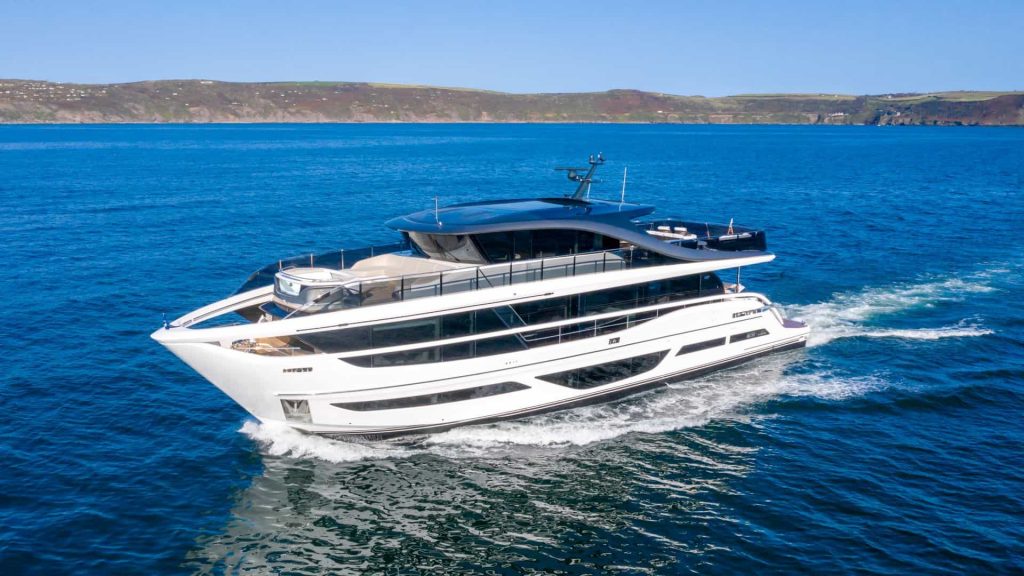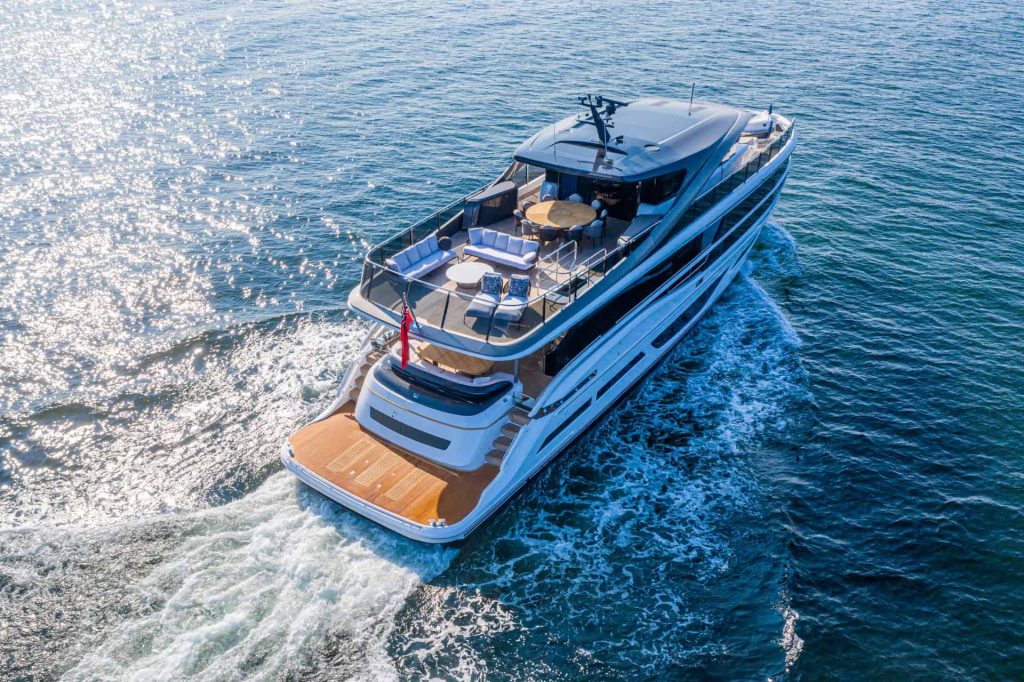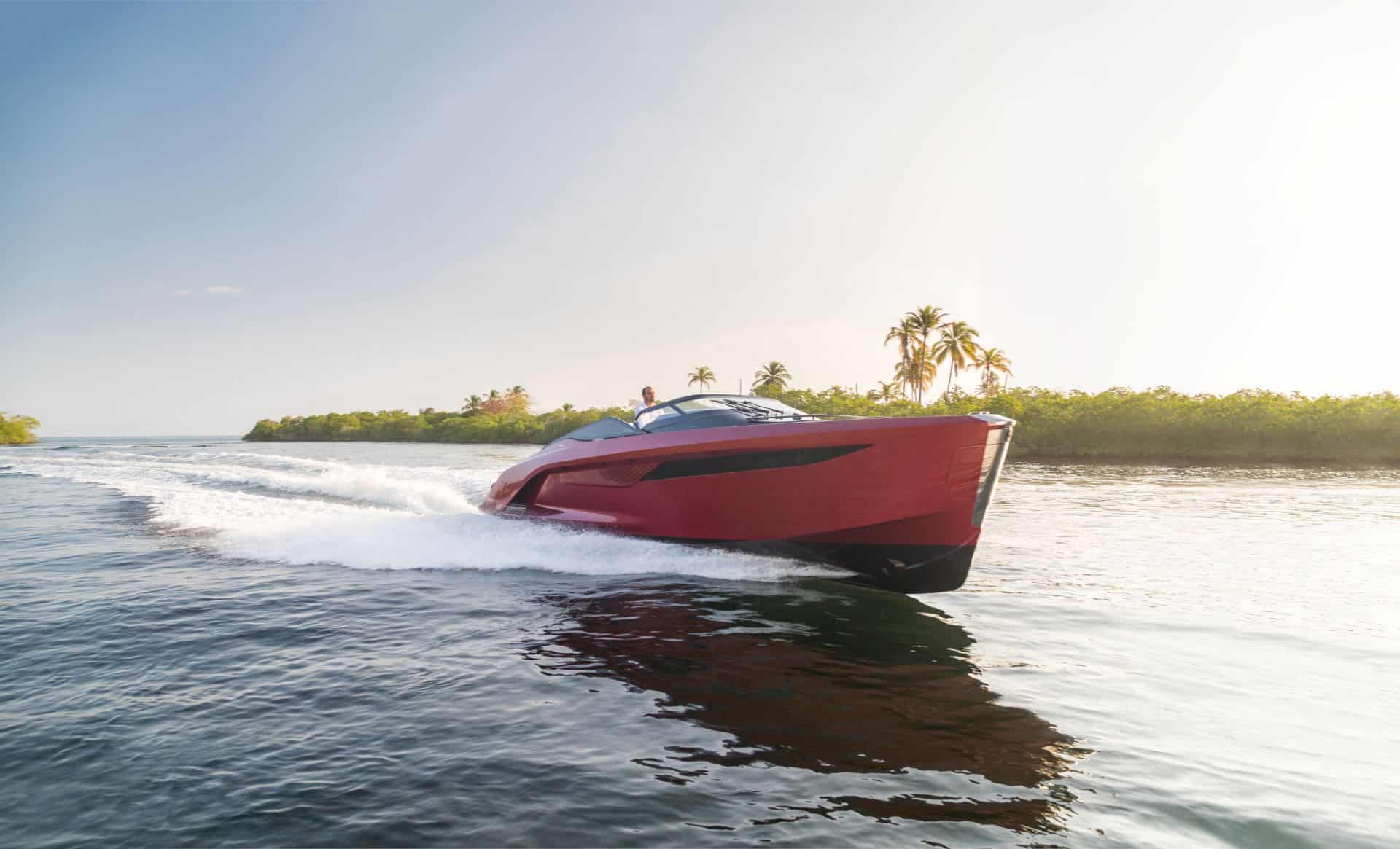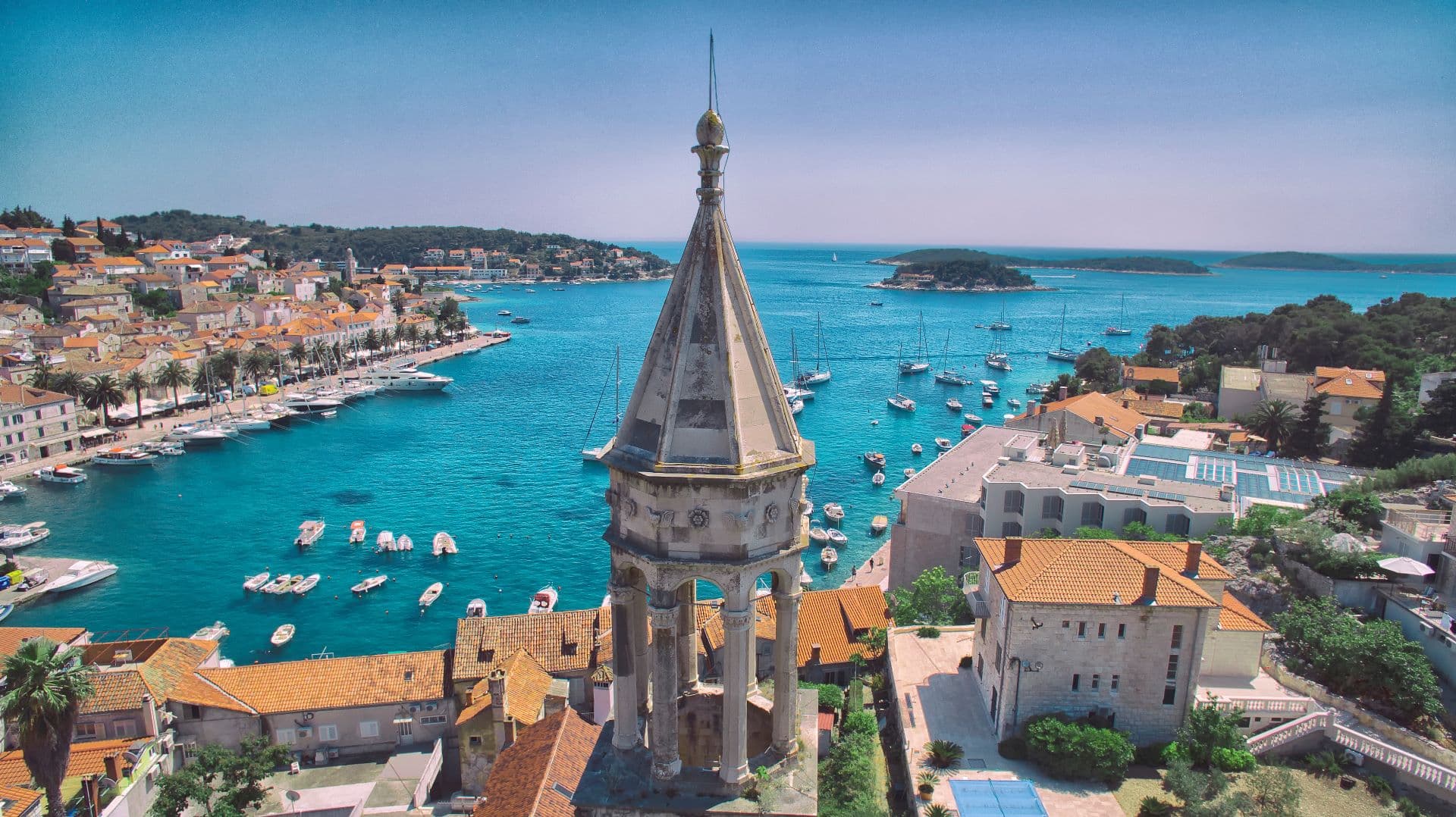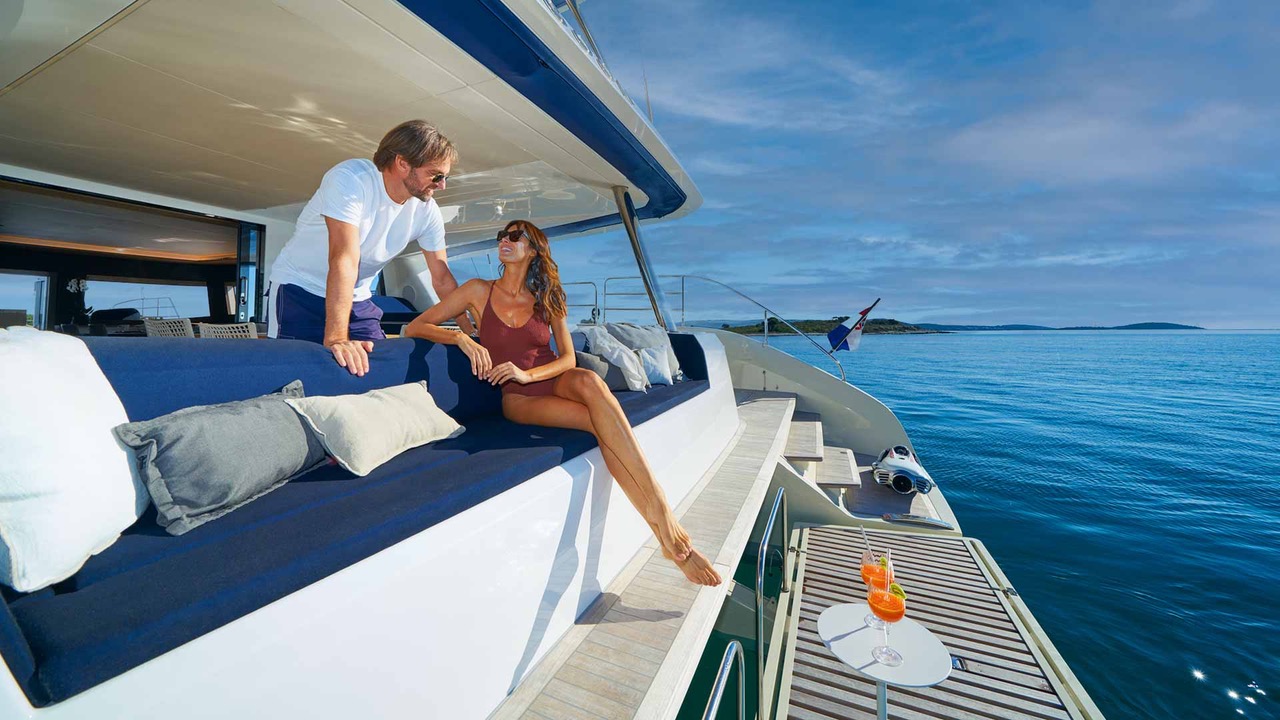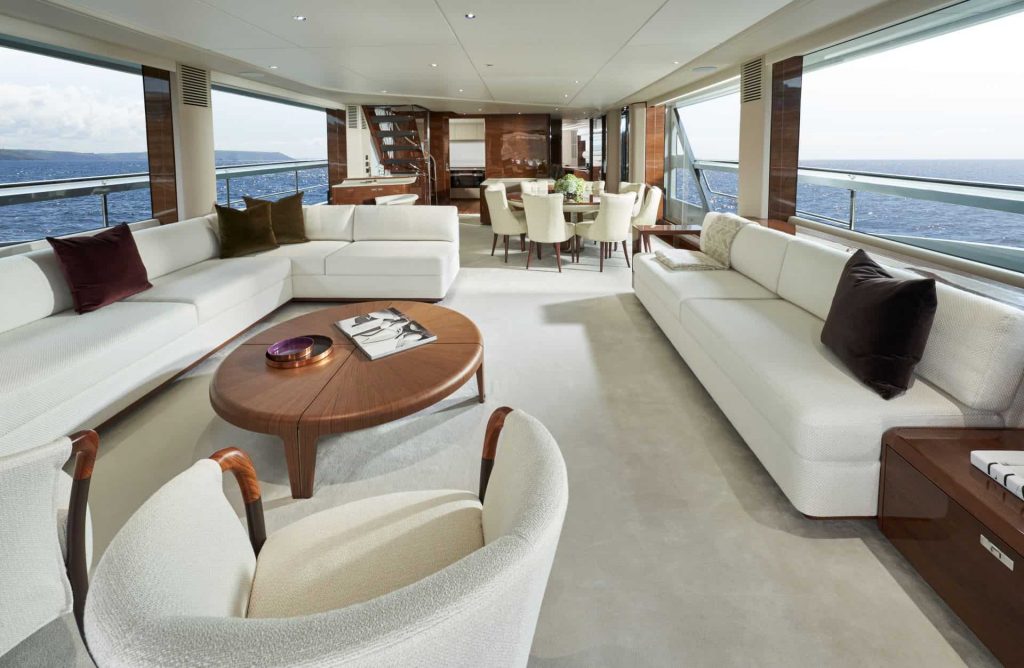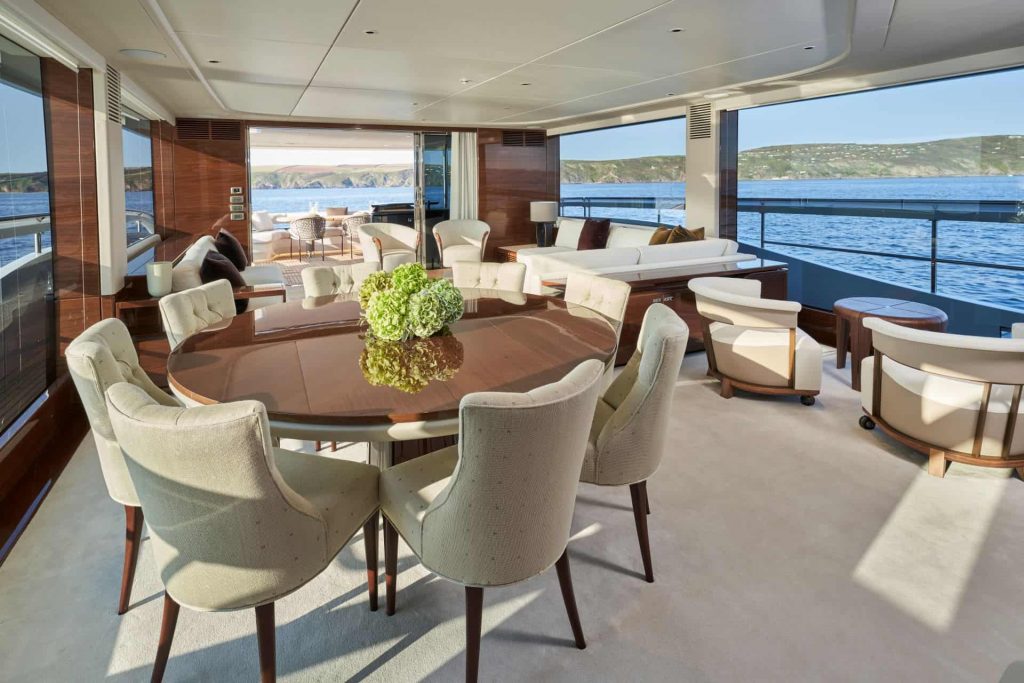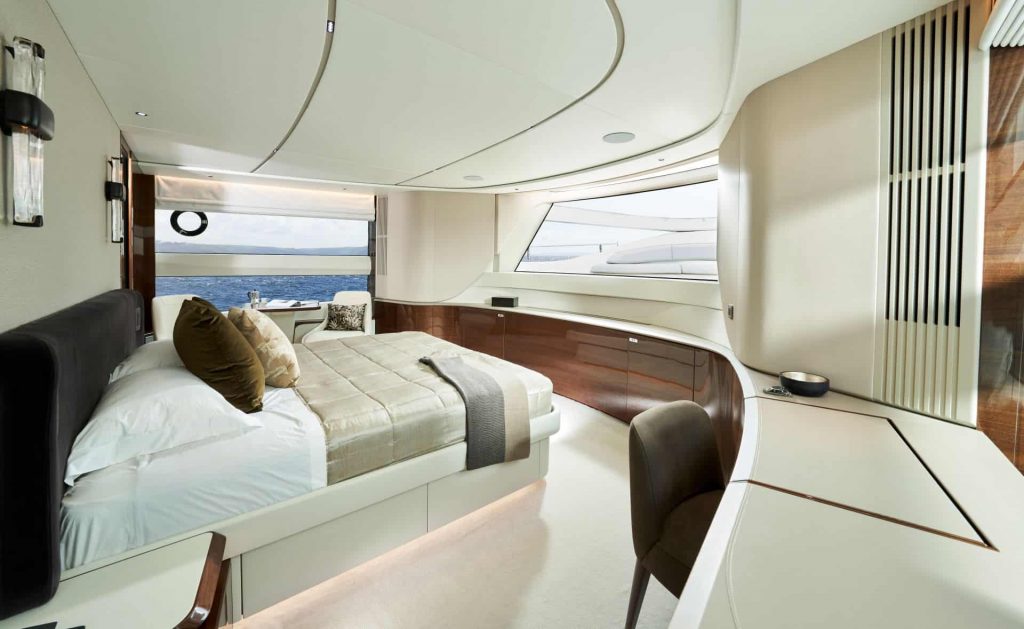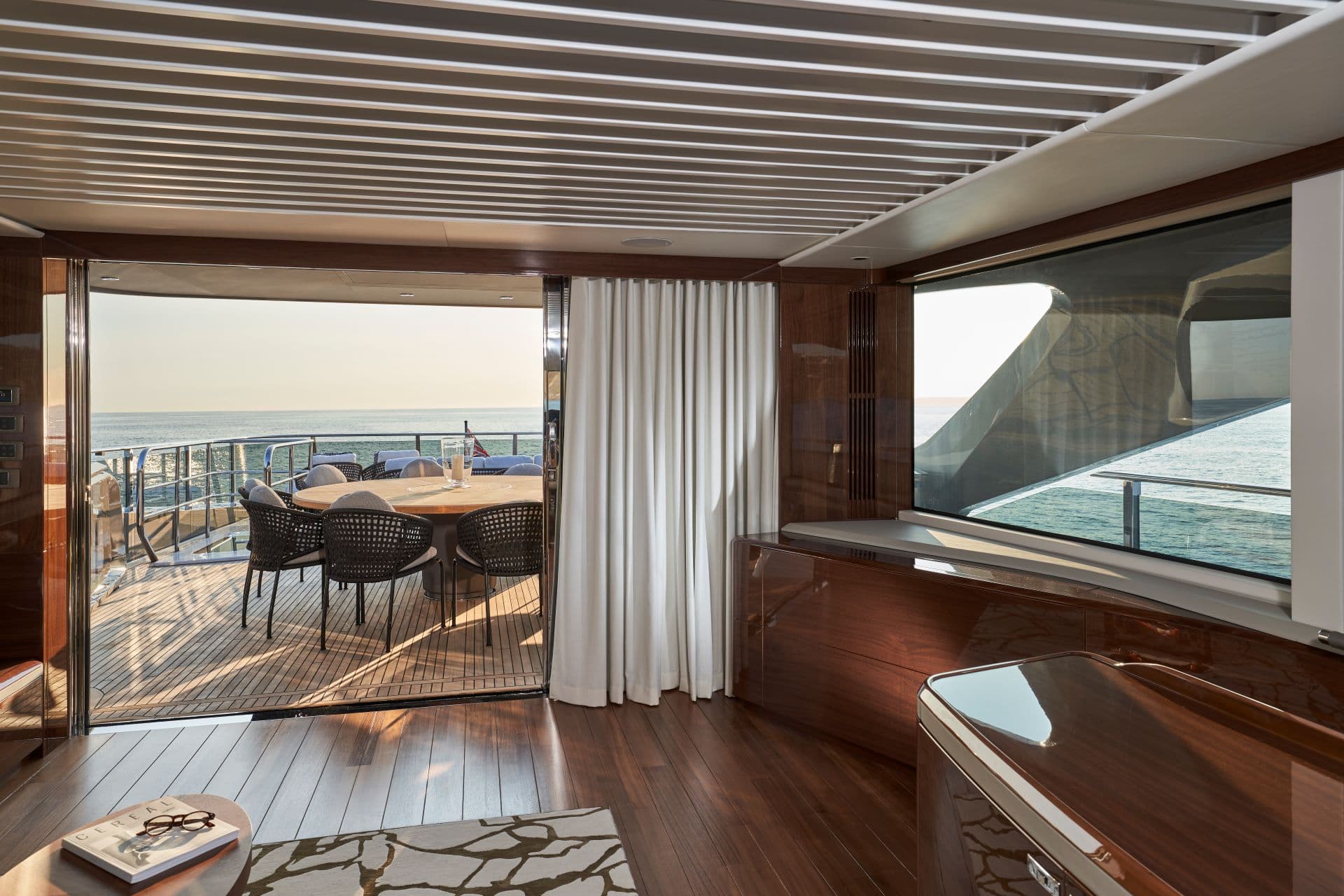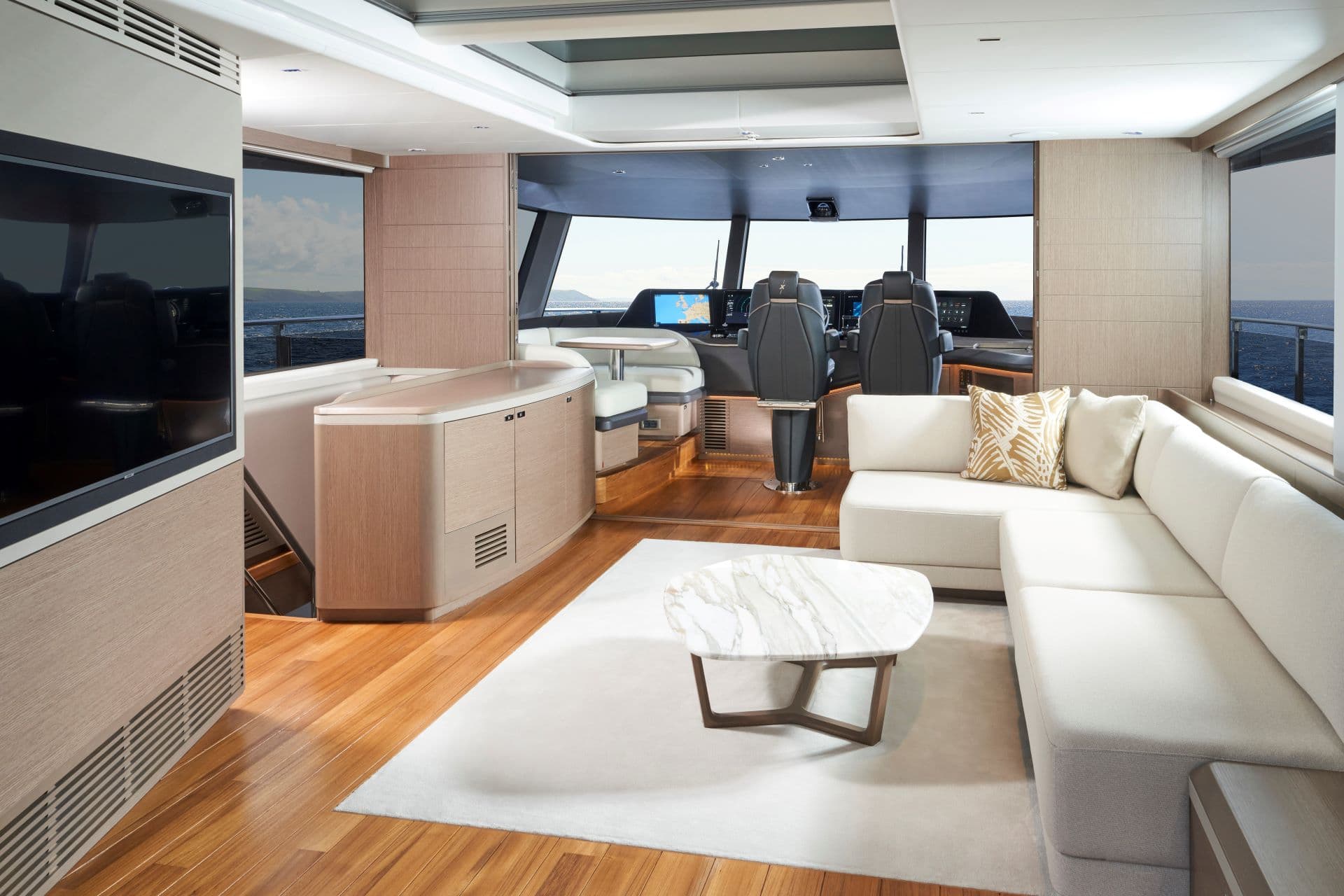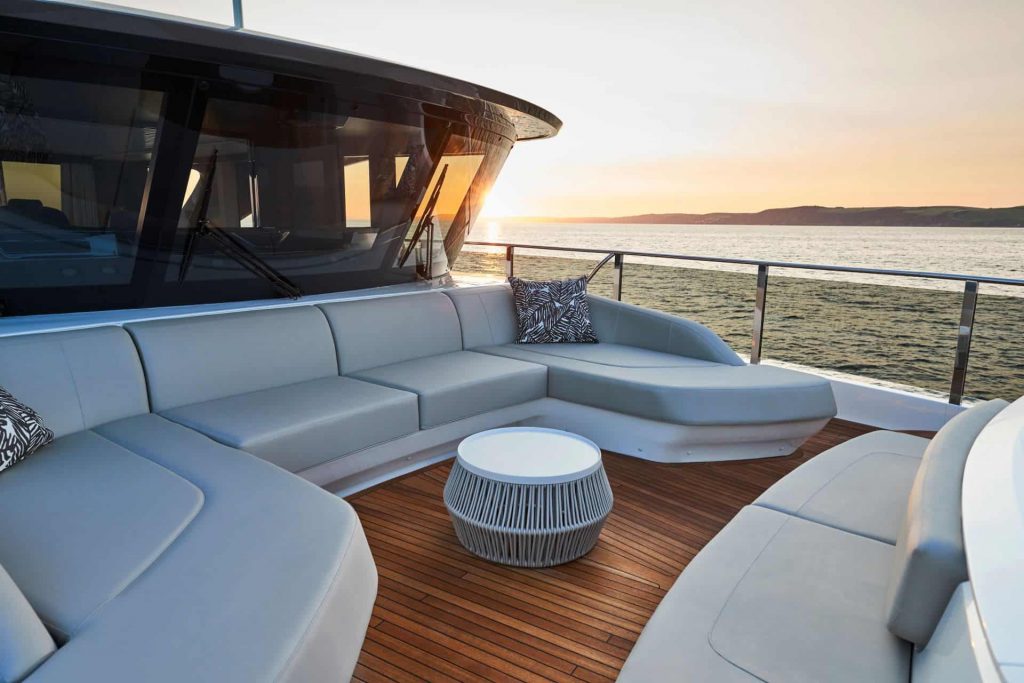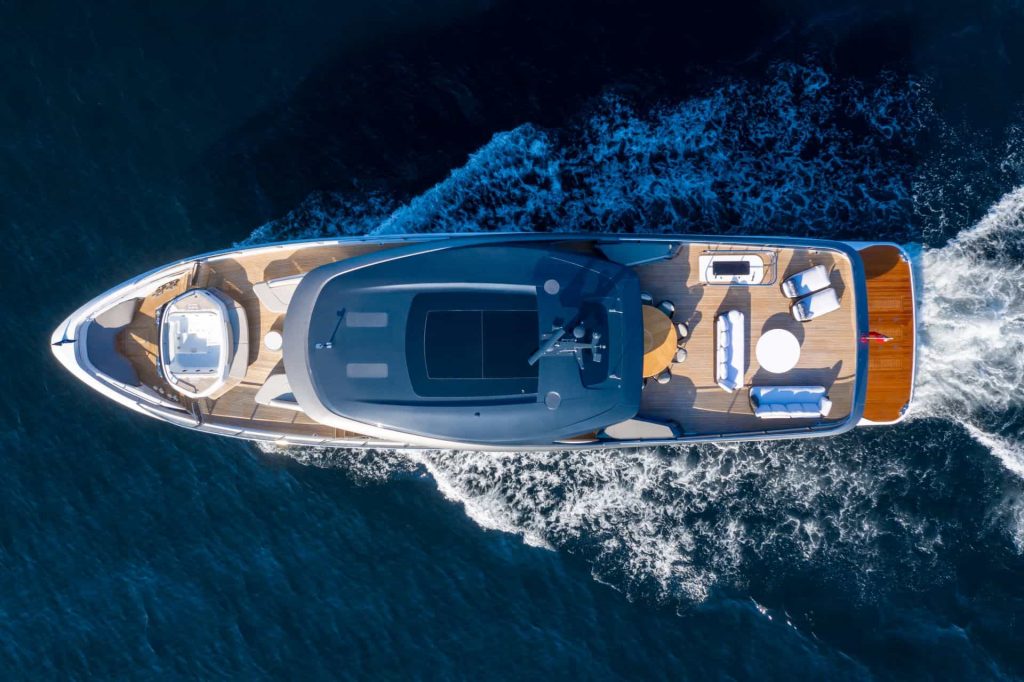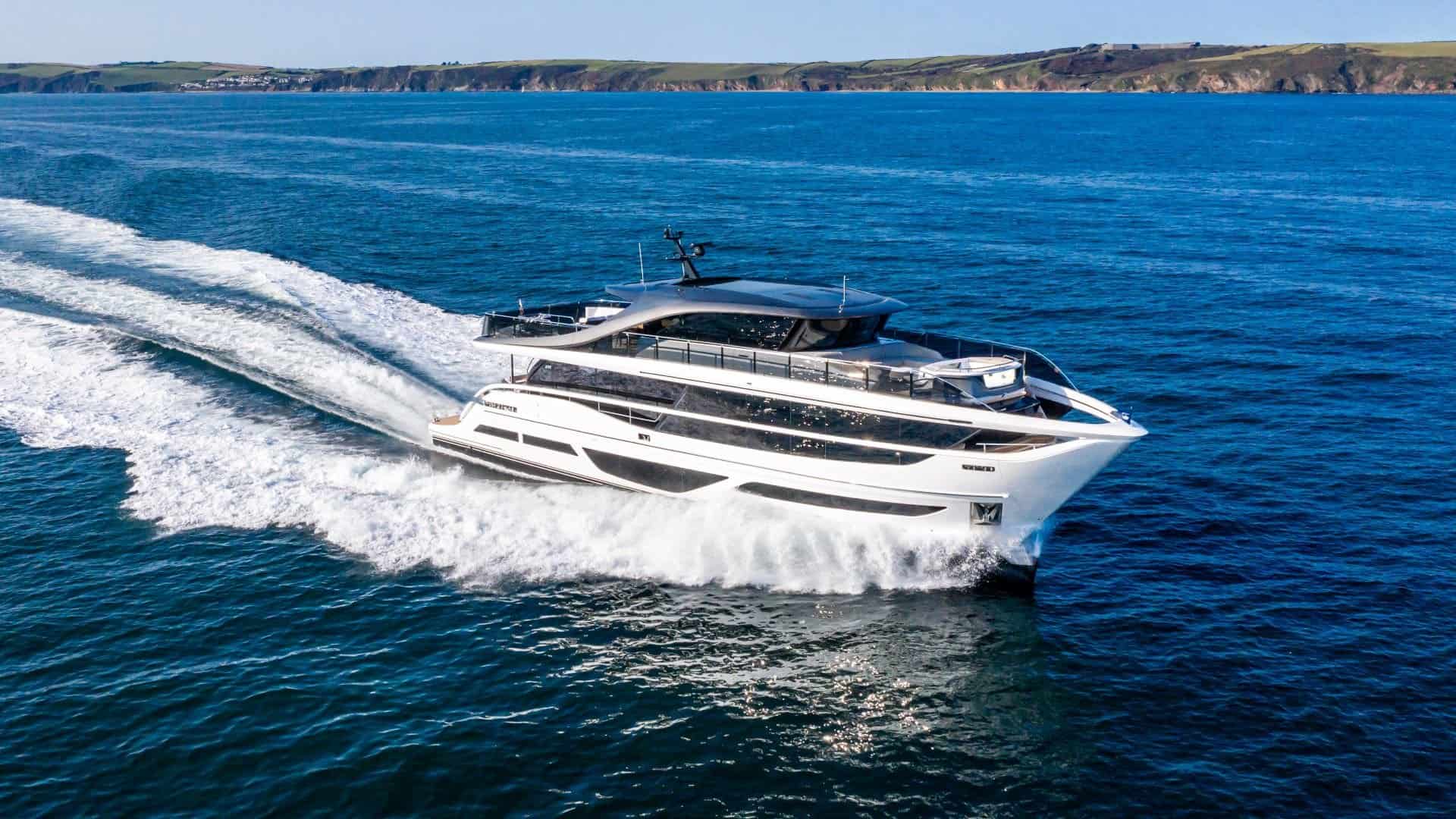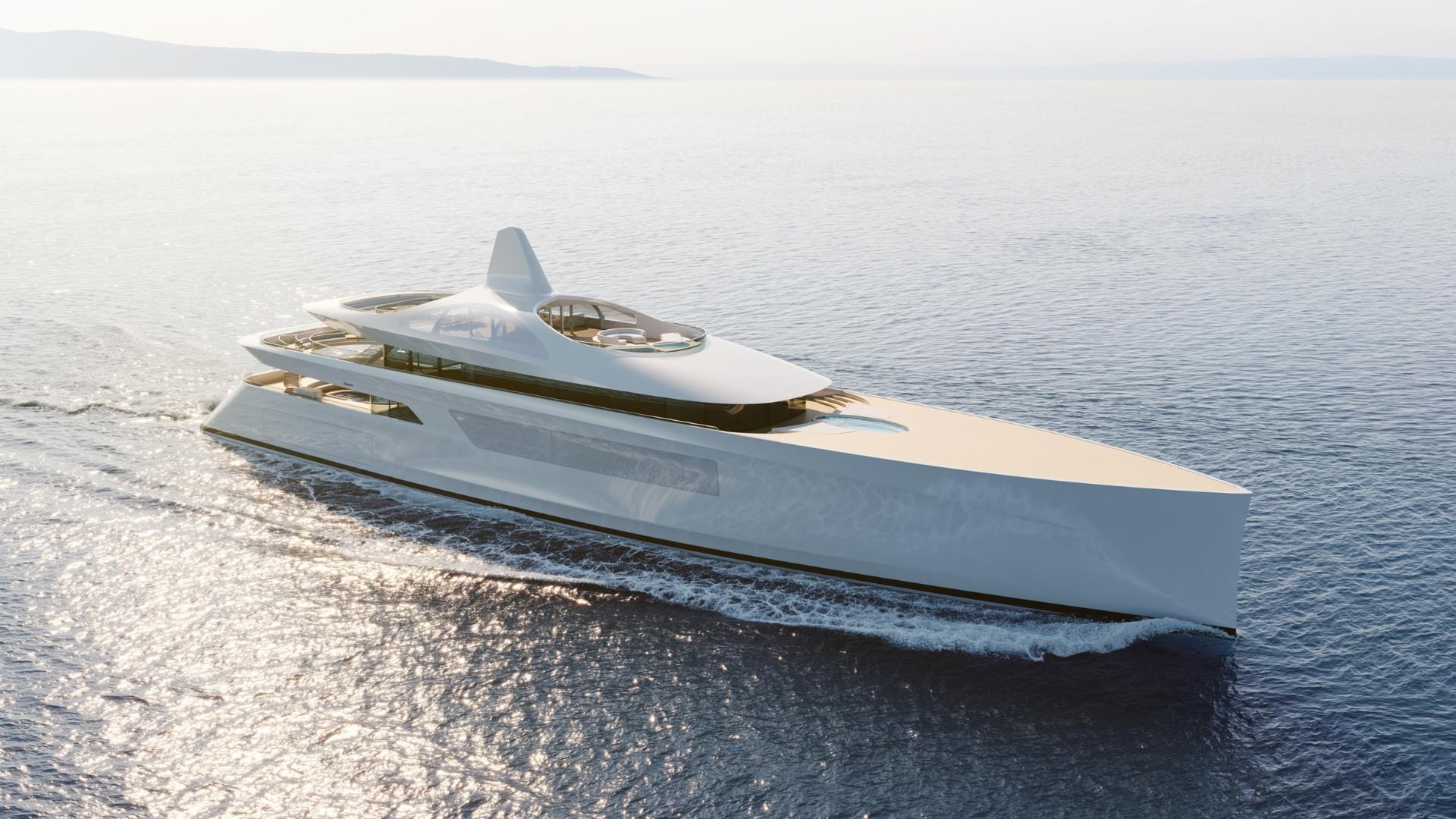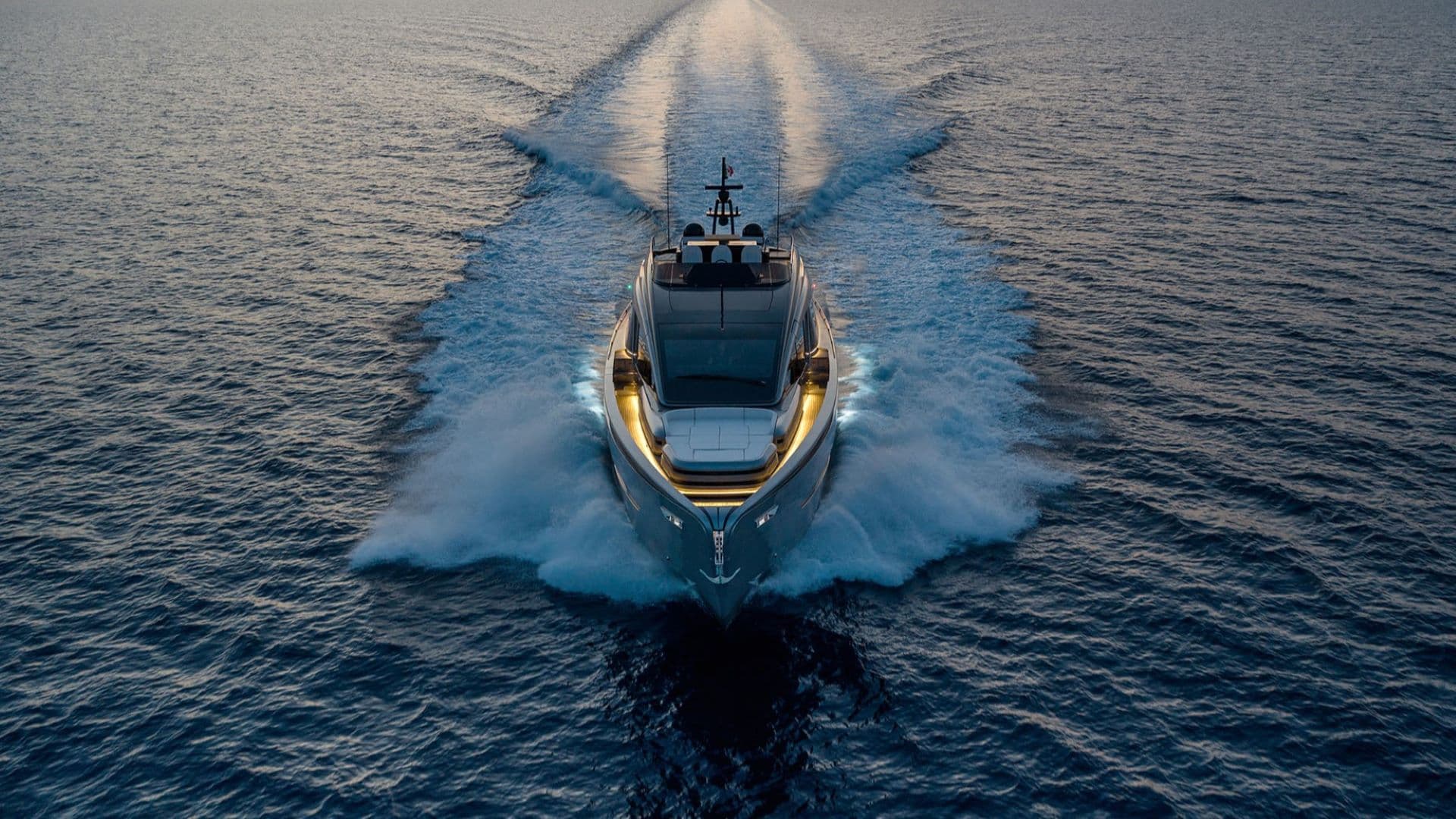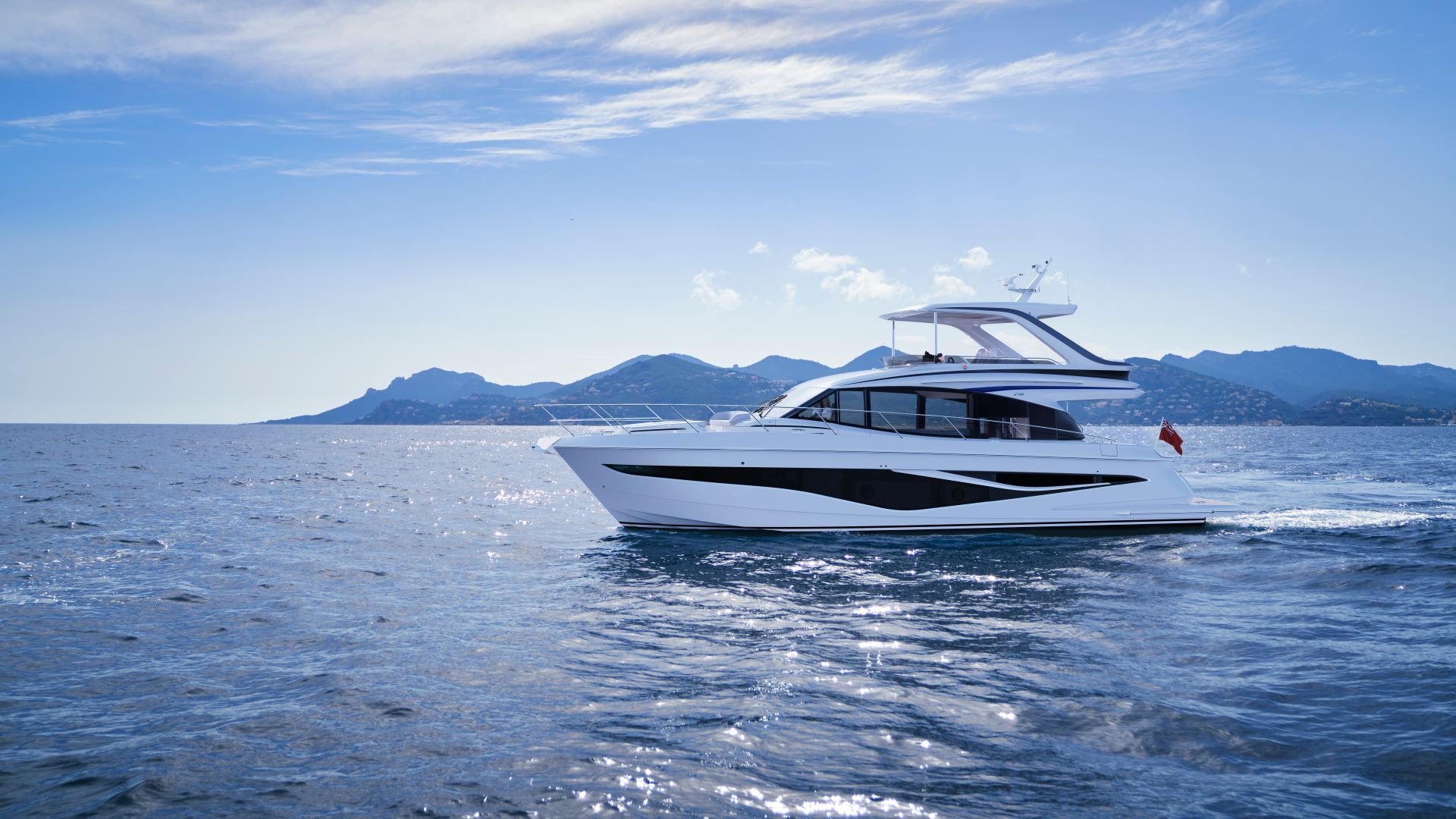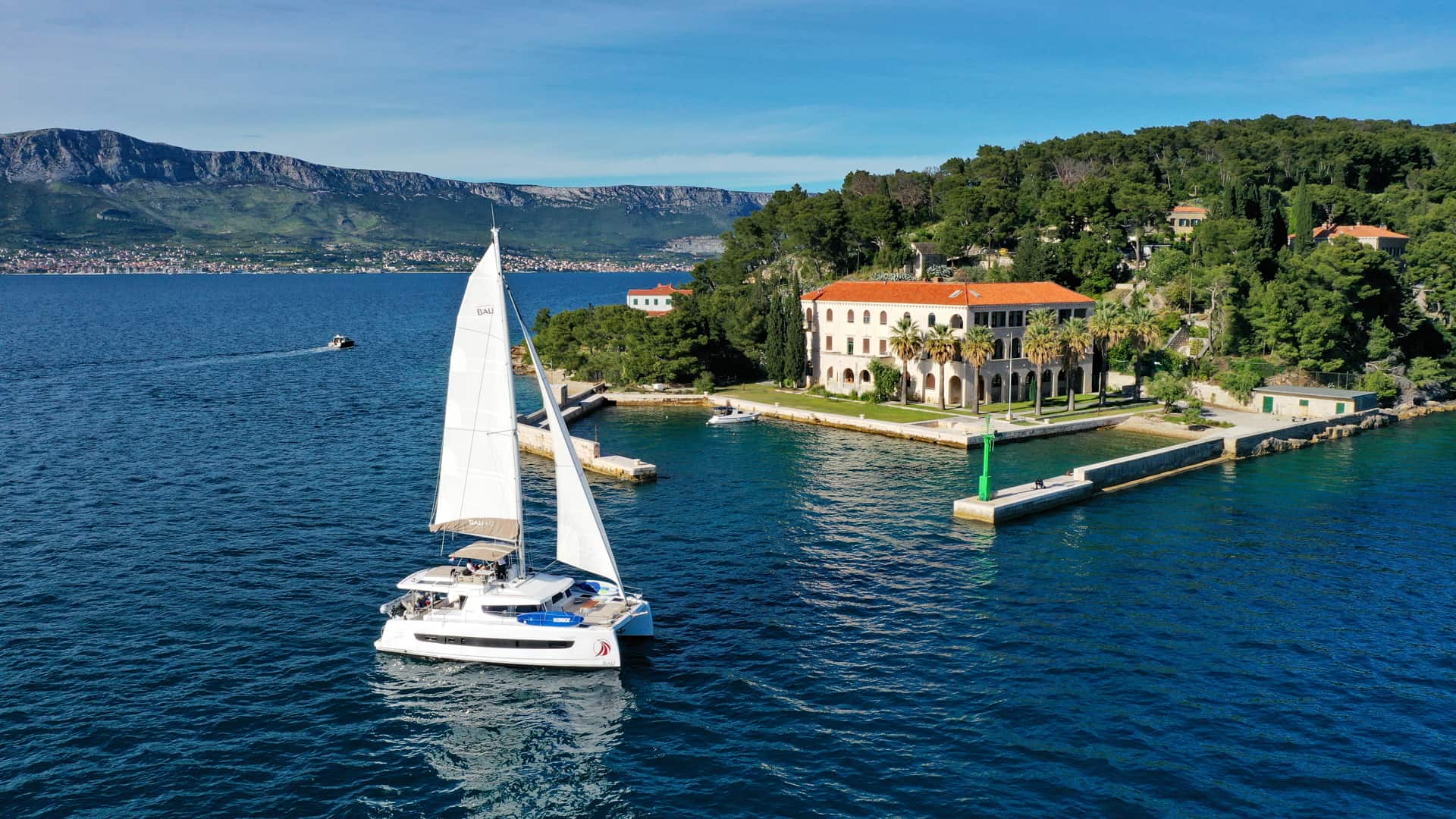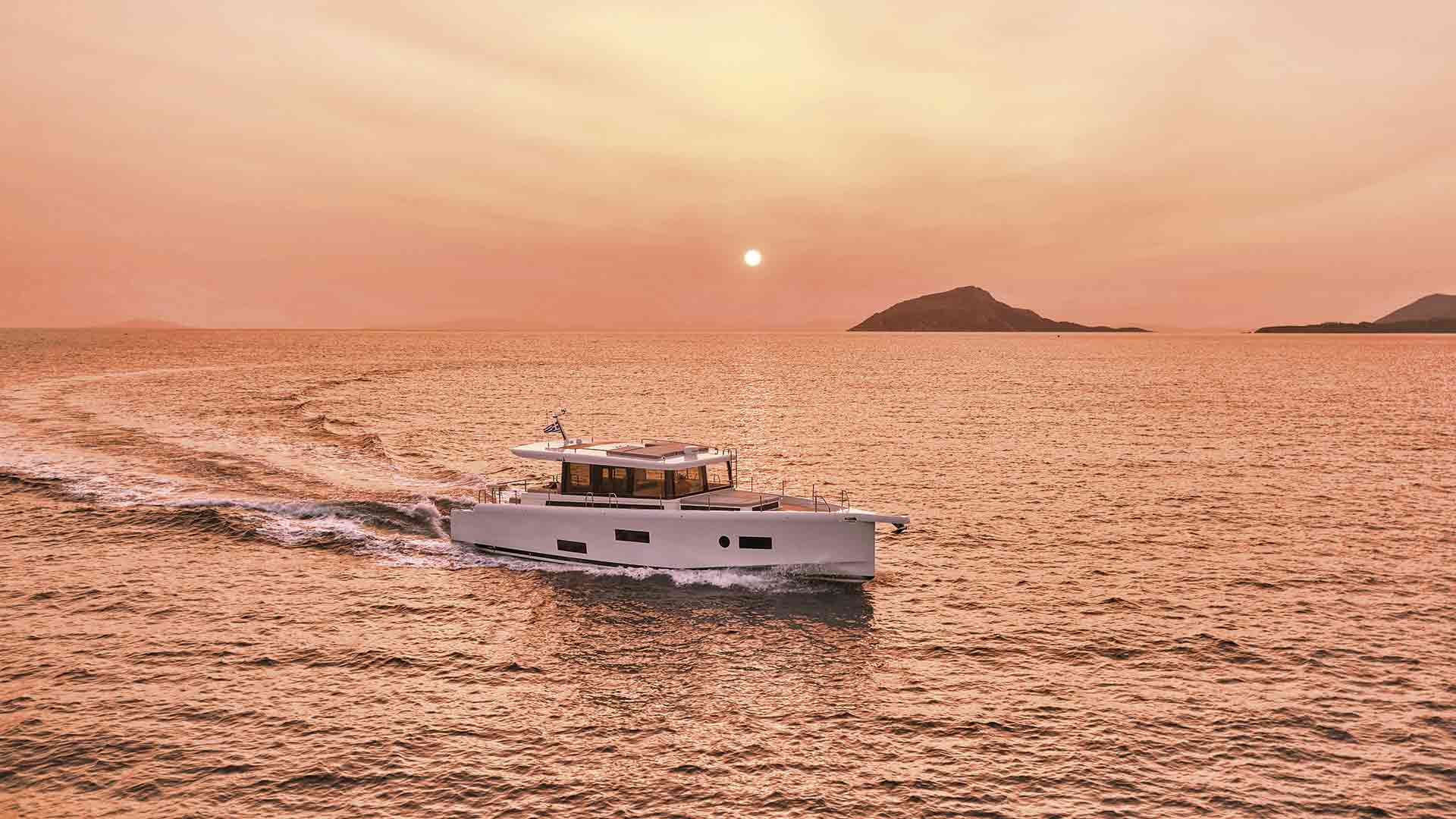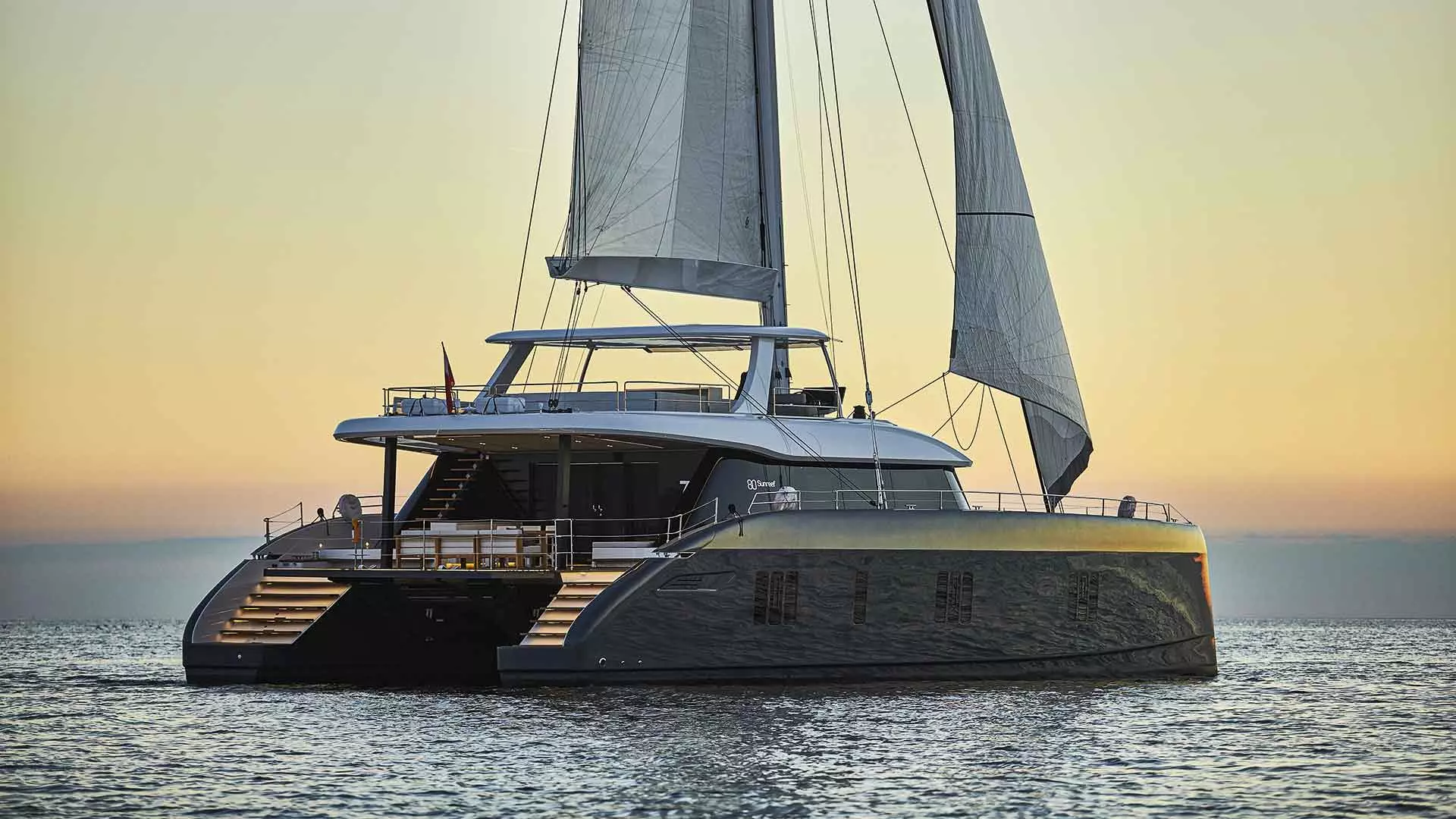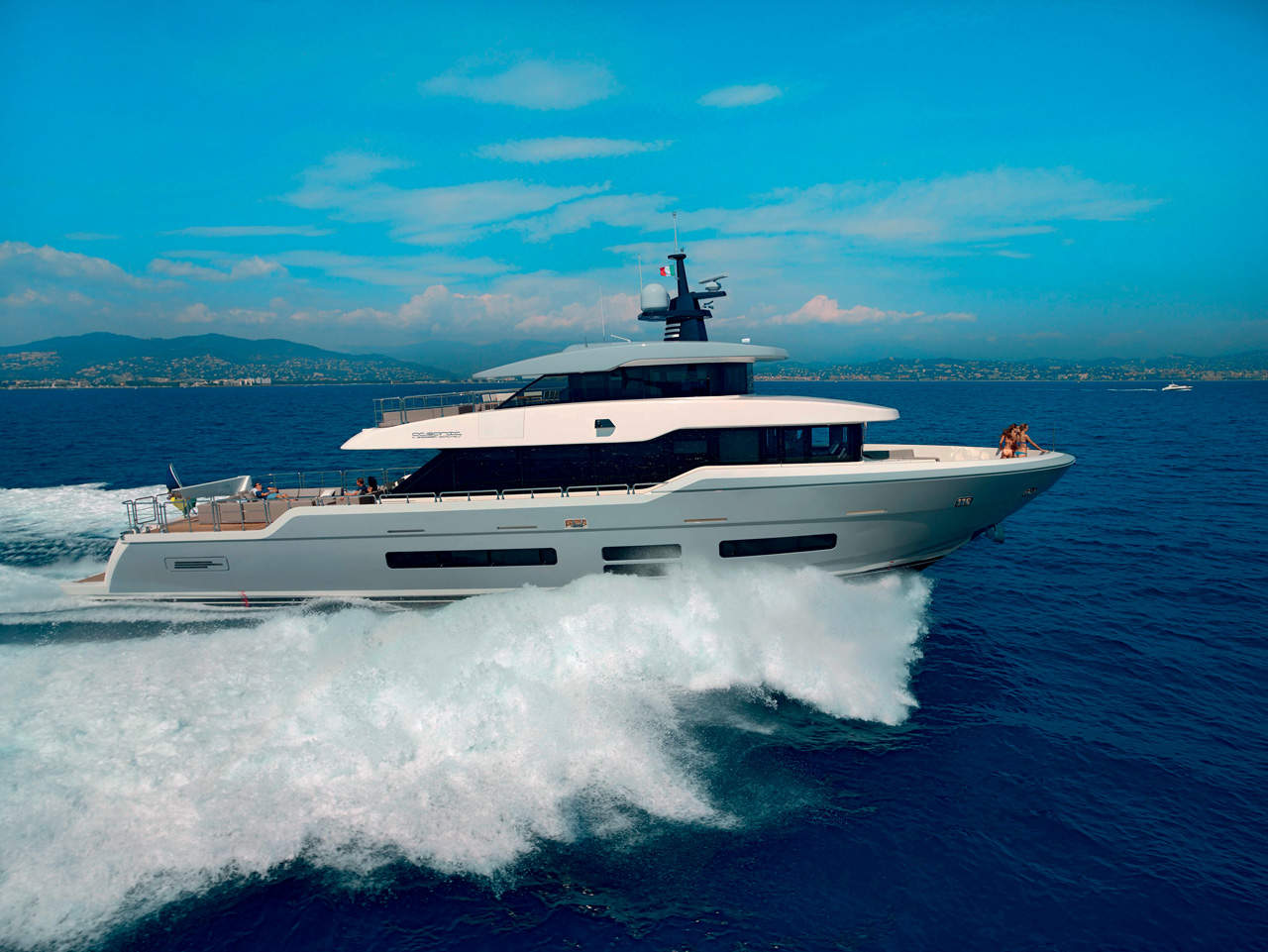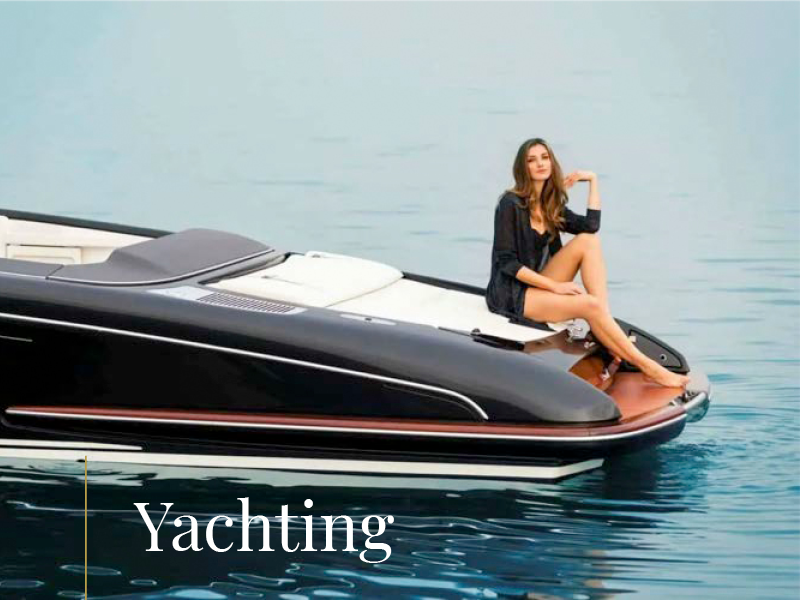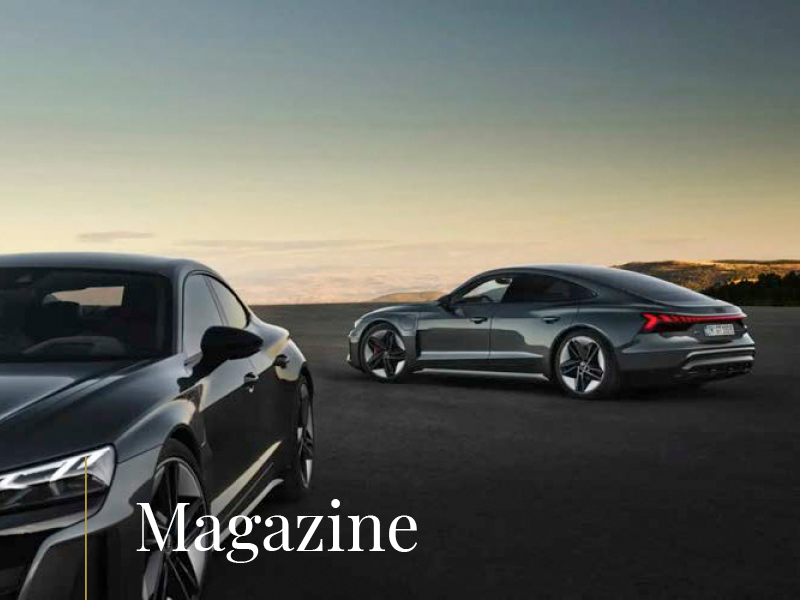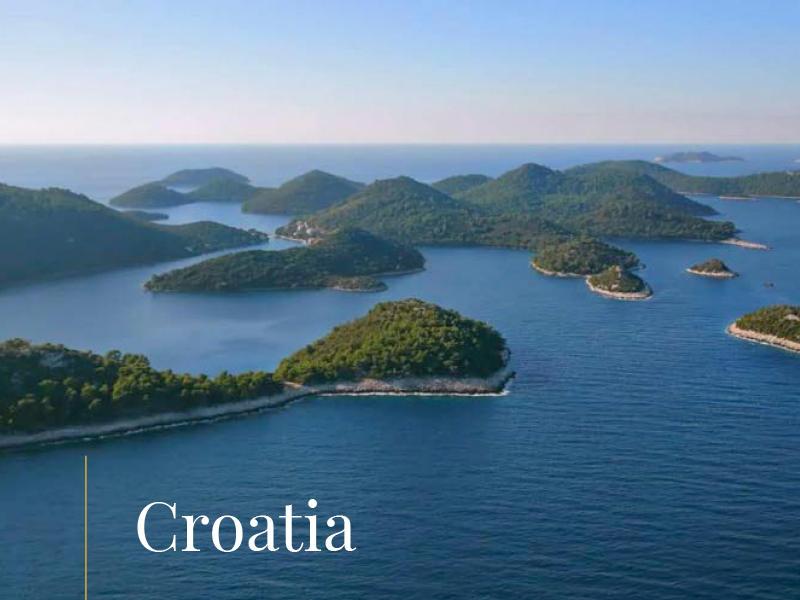Playing it safe, risk-free and fear-free would have been easier, but Princess apparently rejected all such ideas on the first day of working on X95 project. This yacht represents a bold and courageous step into the unknown for the British shipyard
It was a bold move. In 1965, most British boatbuilders targeting the newly prosperous middle classes were making speedboats and runabouts that could be towed behind the family Ford Cortina.
Down in Plymouth, a young engineer named David King had other ideas. With two associates he bought a set of mouldings for a twin-engine, 31-ft cruiser, fitted it out in a waterside shed, and sold it – for £3,400. That was the price of a family home. But orders came in, the Project 31 evolved into the Princess 32, and one of the most famous brands in boatbuilding was born.
Princess X95 yacht design
Princess Yachts marked its 50th anniversary by tracking down an original 31 and restoring it, to use as a sort of roving cultural ambassador for the shipyard. Re-engined with a single D3 Volvo in place of its rusting twins, and fully refurbished inside and out, she was displayed at the Princess stand during the 2015 Cannes Yachting Festival– and attracted as much attention as the rest of the range combined.
A photo shoot of the original Princess model alongside the latest just had to be done. Whichever end of time’s telescope you look down, it’s hard to see how these two craft are even the same species, let alone the same family. The Princess X95 luxury yacht tips the scales at about 30 Project 31s. You’d have to say it looks it.
For a shipyard that made its name with understated, conservative designs that didn’t date, the X95 represents an extraordinary step into the unknown, a move every bit as bold as David King’s all those years ago.
The Princess X95 is at the cutting edge of current motor yacht thinking. ‘Widebody’ is the latest buzzword in the sub-100ft sector, and various shipyards have designs in the pipeline, including Sunseeker and Azimut. At least one (the Sirena 88) was unveiled at the 2019 Cannes show.
Princess X95 layout
Princess’s X95, conceived in-house, with naval architecture by Olesinski and styling by Pininfarina like Princess R35, had a ‘virtual’ launch, thanks to Covid, in the summer of 2020. The widebody concept usually takes the form of a raised wheelhouse that allows a fully enclosed main deck to extend all the way forward. This means, in turn, that the upper deck can also run almost the full length of the yacht. Between them these two levels vastly increase the amount of useable space on board, both inside and out.
Their effect on the Princess X95 is simply astonishing. It is not a particularly beamy yacht for its length (28.96 m), but for sheer deck space and volume it will take some beating. Headroom through the main deck is a fulsome 6ft 9in, and barely any less whether up in the sky lounge or down below in the guest cabins. The wheelhouse and sky lounge form an island between the upper relaxation areas fore and aft, their height above the waterline ensuring both seclusion and spectacular views.
The main deck has the layout of a superyacht’s. A corridor leads past the galley and down the starboard side from the bright and roomy main saloon to a truly memorable owner’s cabin, with windows on three sides. Stepping down to the lower deck feels slightly like a return to normality, for these spaces look about right for a 95-footer.
Princess X95 interior
Nevertheless, the two double cabins – one forward, one amidships, and both, effectively, VIPs – each rival the master for space and comfort. Even in the twins, the berths are a full 6ft 3in long and 32in wide. With so much space to play with, Princess’s designers have naturally come up with plenty of layout options.
A beach club in the stern is one, to take full advantage of the yacht’s huge and articulated aft platform, which can be extended nearly 20ft clear of the transom and directed upward as well as down.
On the main deck, you can swop that fabulous master suite for a forward entertainment lounge, or a country-kitchen style dining area with an open-plan galley. The various seating arrangements can also be altered, and that hot tub on the bow can be replaced, if you prefer, by a simple sunbed.
It was a bright and cheerful day of sunshine when I caught up with the second Princess X95 in Plymouth Harbour in September, but there ended all resemblance to the day of the photo shoot with the little Project 31. In a marina, it can sometimes take only a modest breeze whistling through the halyards of the sailboats to convince you that it’s too rough to venture out. But there weren’t any yacht halyards at Princess’s Turnchapel base, and there was nothing modest about the breeze, which was blowing at a steady 20 knots and gusting to more than 30.
Princess offers just the one engine option on the Princess X95, a pair of 1,900-hp MAN V12s which luxuriate in a palatial white engine room just aft of midships and drive conventional shafts and props. The hull’s underwater shape emphasises lift and efficiency, with broad aft surfaces and a modest deadrise at the stern, while the bow is sharpened up with a short wavepiercer to help smooth things out in a head sea. It was hard to tell what effect the wavepiercer had during our test, however.
Princess X95 sea trial
When we cleared the long, Victorian breakwater, six- to seven-foot seas were rolling in from east-south-east. Punching into them, the hull’s vertical acceleration felt pretty well damped, although as the big, beamy bow descended into the troughs, the spray still came right over in thick white sheets that kept the windscreen wipers fully occupied.
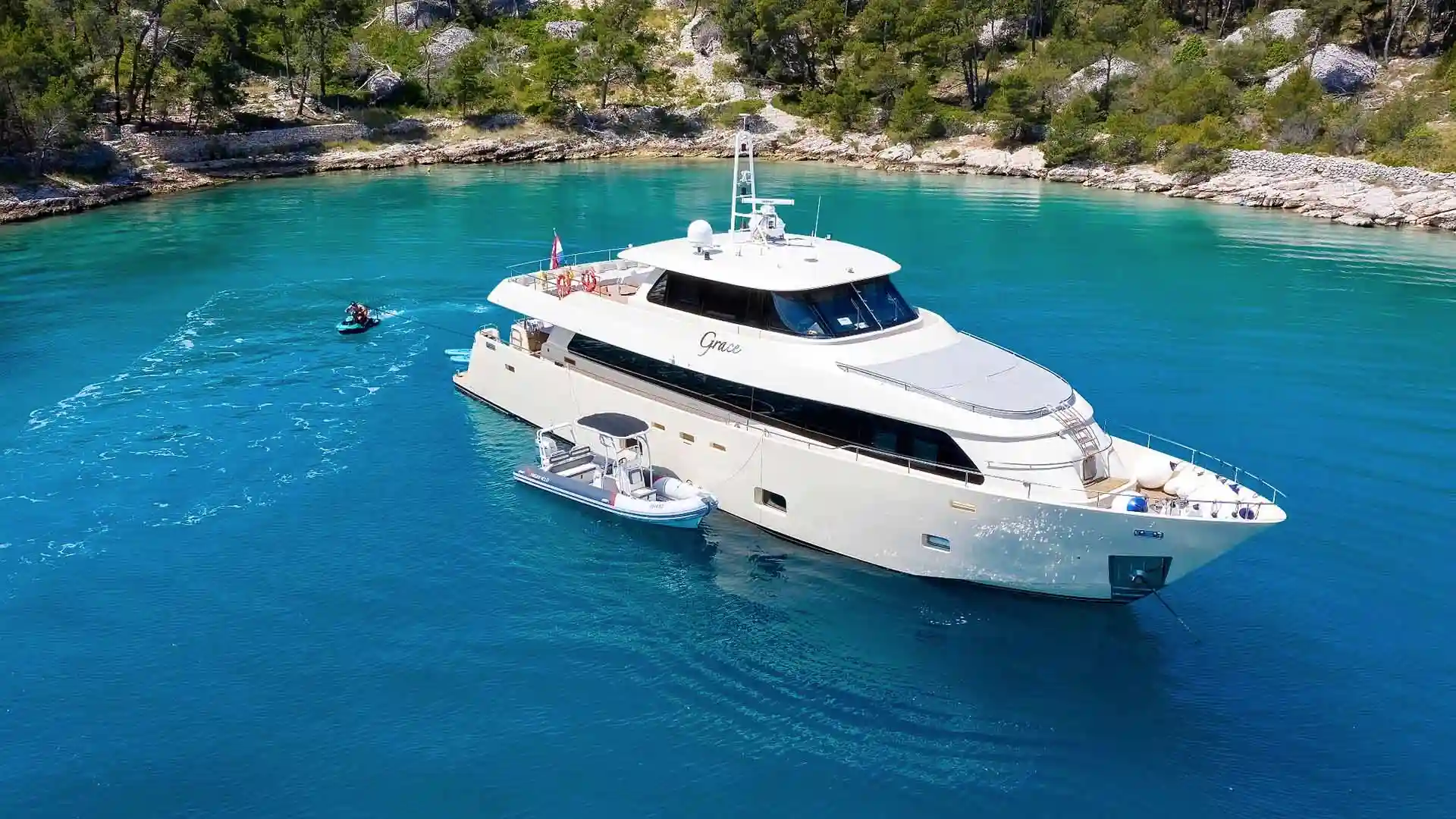
Grace
Grace, a modern 28-meter motor yacht built by Aegean Yachts in 2013, is in excellent condition and is now available for charter with an attractive price. This 5-cabin yacht, meticulously maintained, offers an ideal opportunity to explore the Adriatic coastline.
Princess recommends using the Sleipner Fin stabilisers on the X95 at all speeds above eight knots, and as we turned beam-on to the waves I had absolutely no problem with that.
The X95’s moderate roll felt significantly exaggerated by our height above the waterline. Throttle response was surprisingly lively for a boat that feels so big, and it reacted positively to the helm, heeling noticeably outwards in hard turns.
Overall, the Princess X95 dealt with the conditions without breaking a sweat. Our maximum two-way average of just under 24 knots was well within the performance margin published by the shipyard, even with a heavy load of fuel and water. The spray might have been flying, but any impacts as we drove into the seas at 16 to 18 knots were perfectly manageable.
Running with the waves on the quarters and dead astern there was no sensation of all that weight so high above the waterline – the yacht tracked well and handled easily. Many a more conventional hull would have struggled to provide such a comfortable ride. If I had any doubts about the Princess X95 – and as I stood beneath it on the pontoon for the first time, it really didn’t look like something designed to float – they began to dissipate as soon as I climbed aboard.
The spaces work well, inside and out – they’re not just big. And my conversion was complete once we got to sea and pointed the bow towards France. The X95 displayed all the unflappable dependability of an unusually luxurious cross-Channel ferry.
Princess X95 specs
There is no doubt that the X95 represents a bold move by Princess. To play safe, to avoid frightening the horses, to err on the side of conservative – all such instincts seem to have been discarded on day one of the project’s development. But sometimes bold moves pay off.
Text Alan Harper
Photos & video Princess Yachts
